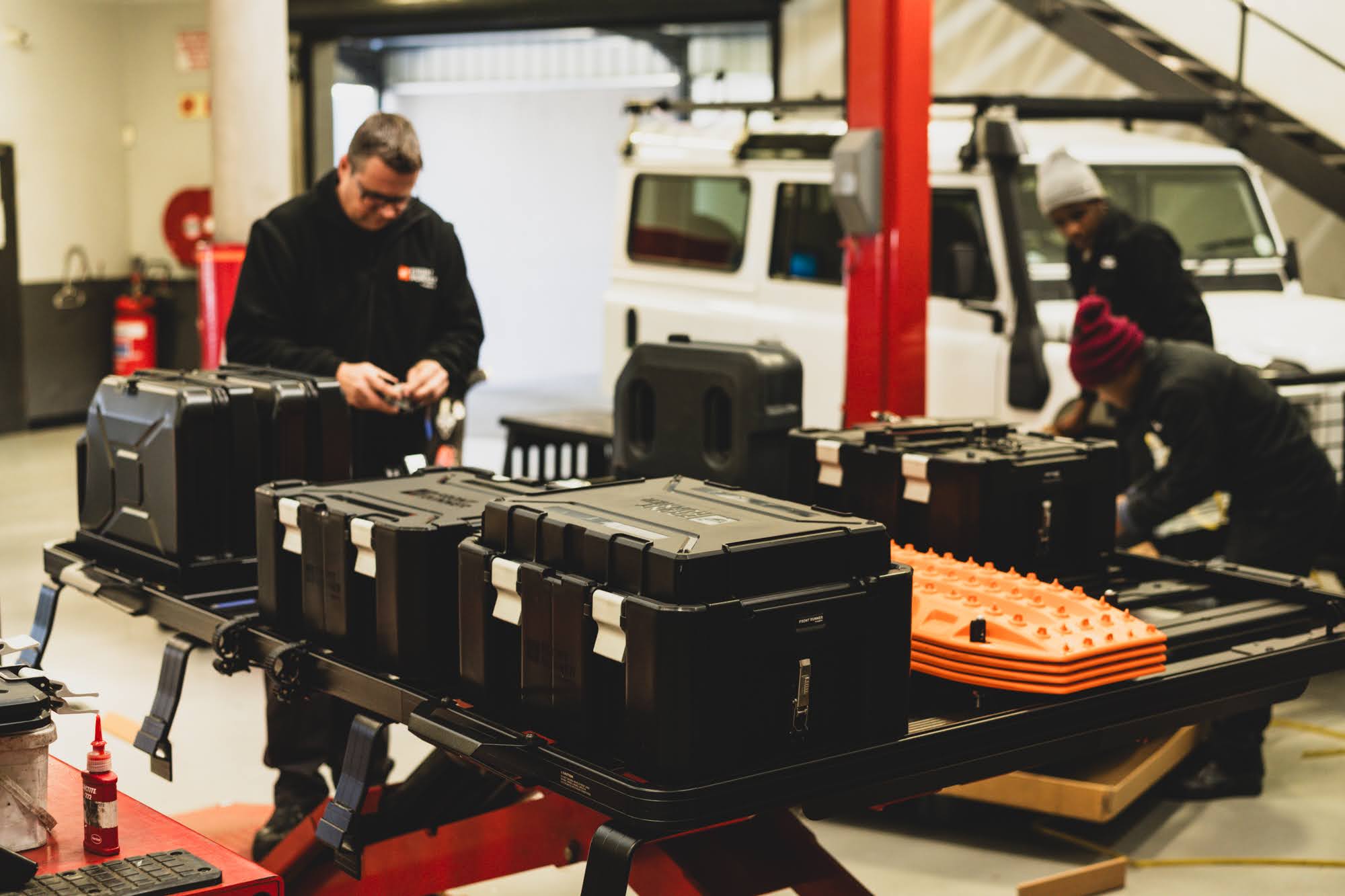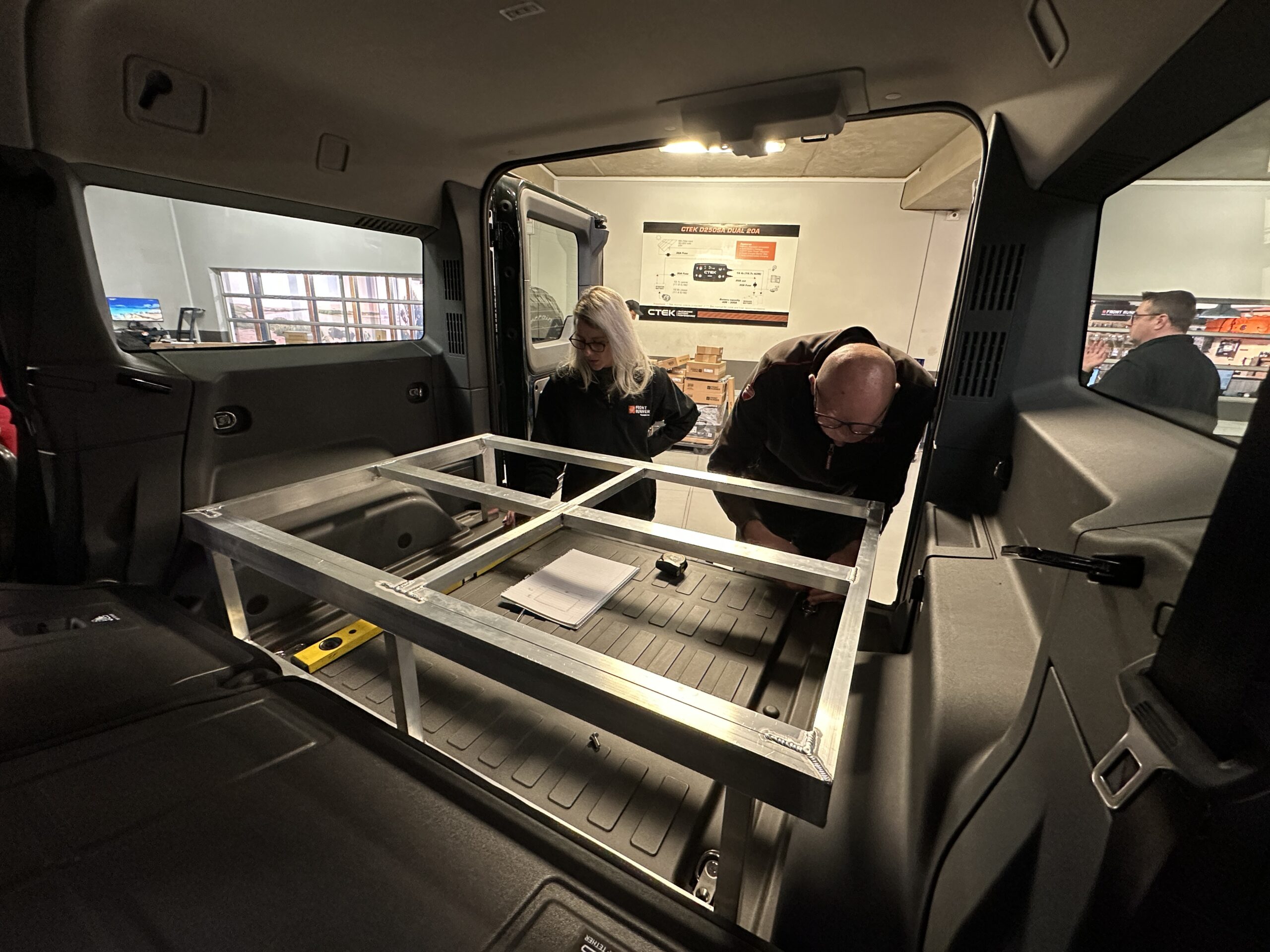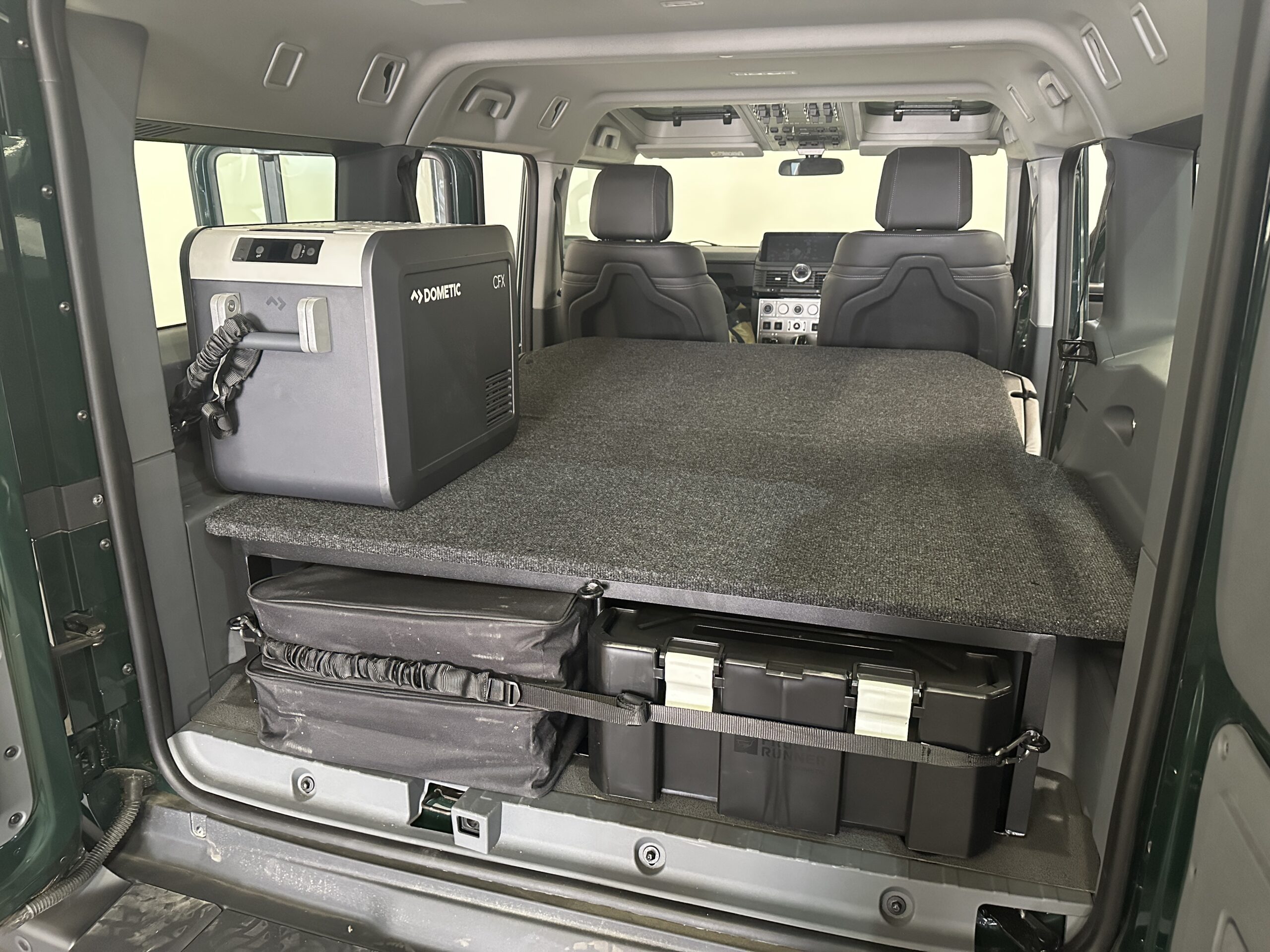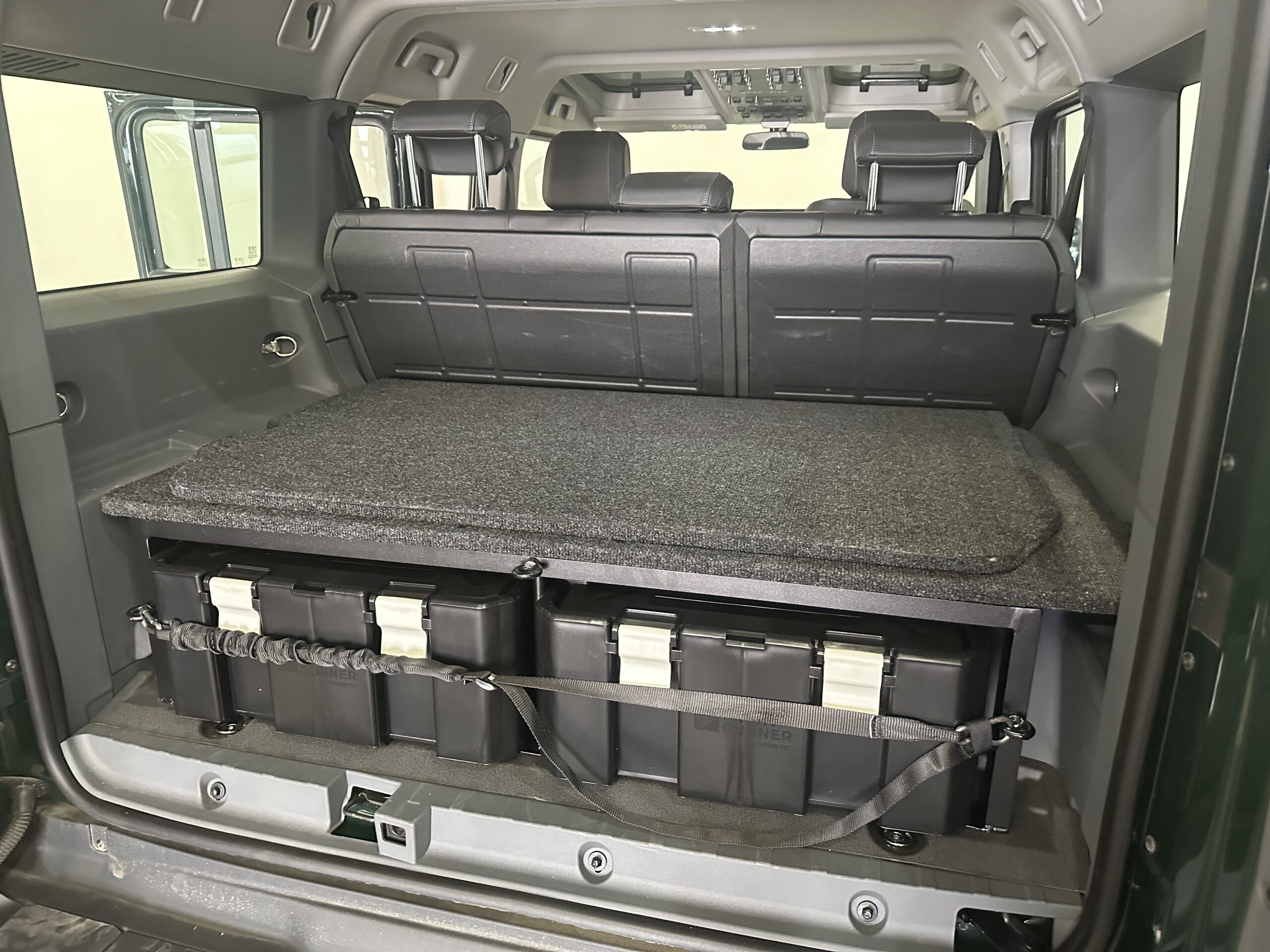The Grenadier is starting to arrive in consumers’ hands in several markets worldwide, including Europe, the UK, Australia, New Zealand, and Southern Africa (among others). Along with that comes rapid innovation of aftermarket accessories to complement this much-anticipated overland platform. Front Runner was one of the first to bring products to market, including their Slimline II full and three-quarter racks with a long list of accessories.
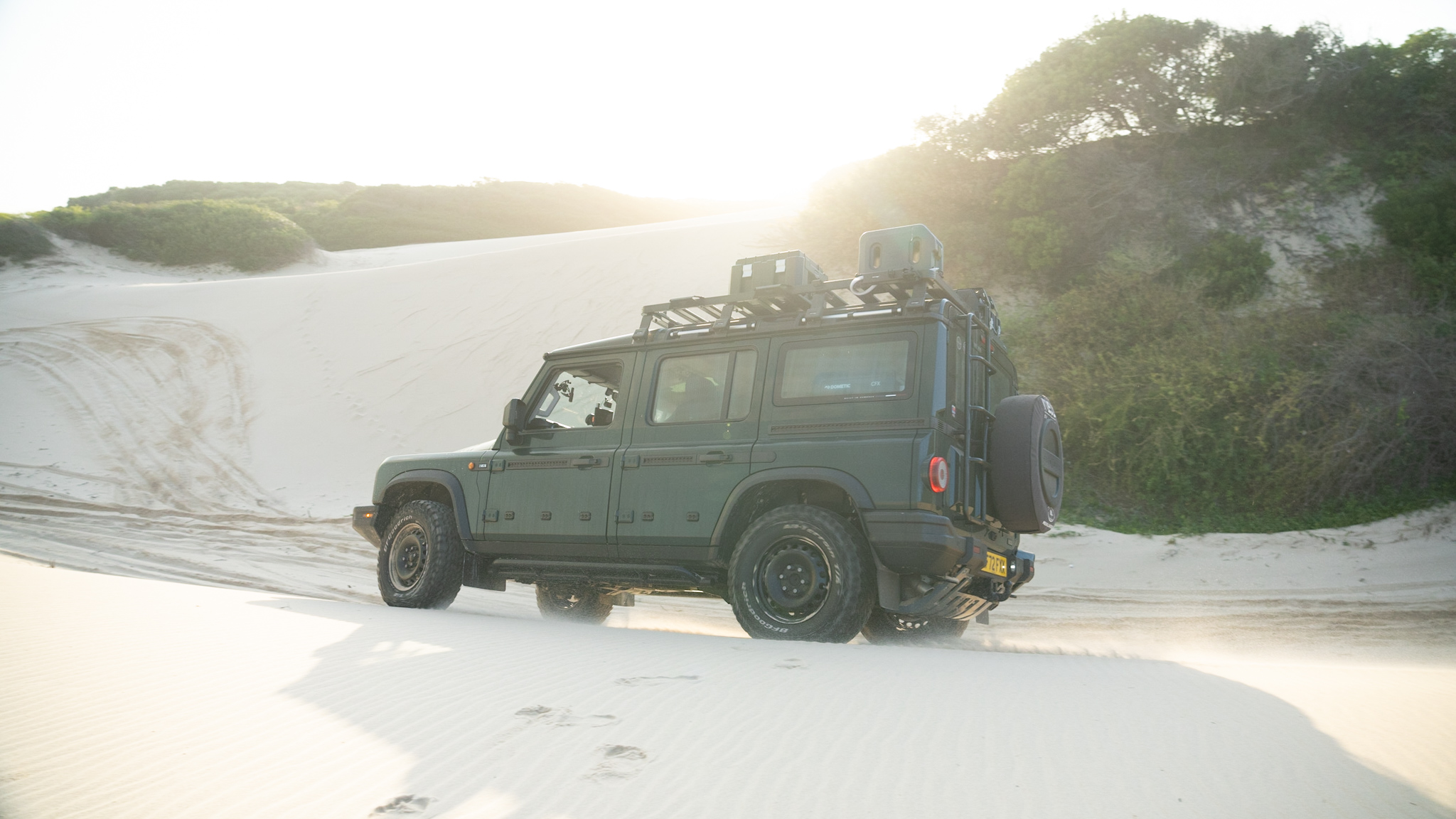
At Expedition Portal, we have been fortunate to get access to a Grenadier for a Trans-Africa adventure and needed to add a few accessories to prepare it for the task. Primarily, we needed a 3/4 rack that would allow full use of the safari windows for game drives and serve as a platform to mount MaxTrax, 40 liters of fuel, and a camp table. Given that the Grenadier has an impressive 150 kilograms (330 pounds) dynamic roof load rating, we also installed a 20-liter water can and a few storage boxes. If possible, we will always keep those other items stored inside. Still, we wanted the capability of mounting the boxes on the roof to make space for passengers in an emergency or when we have friends and family along for the ride.
It is essential to talk about weight, as we have always taken roof loads seriously. The best-case scenario is a bare rack (for reserve capacity), but sometimes adding fuel, bags, and boxes to the rack is a critical option. The 3/4 rack weighs 88 pounds, and each can full of petrol weighs 44 pounds with the mounting brackets, totaling another 88 pounds. Four MaxTrax weigh 31 pounds with the pins, and the camp table weighs 26 pounds. The entire system (with full fuel) weighs 233 pounds, leaving 97 to spare. If the water tank is mounted and filled, that is 52 pounds, leaving 45 pounds for a few boxes and light contents. My goal has been to stay on the lightest side of that equation as possible.
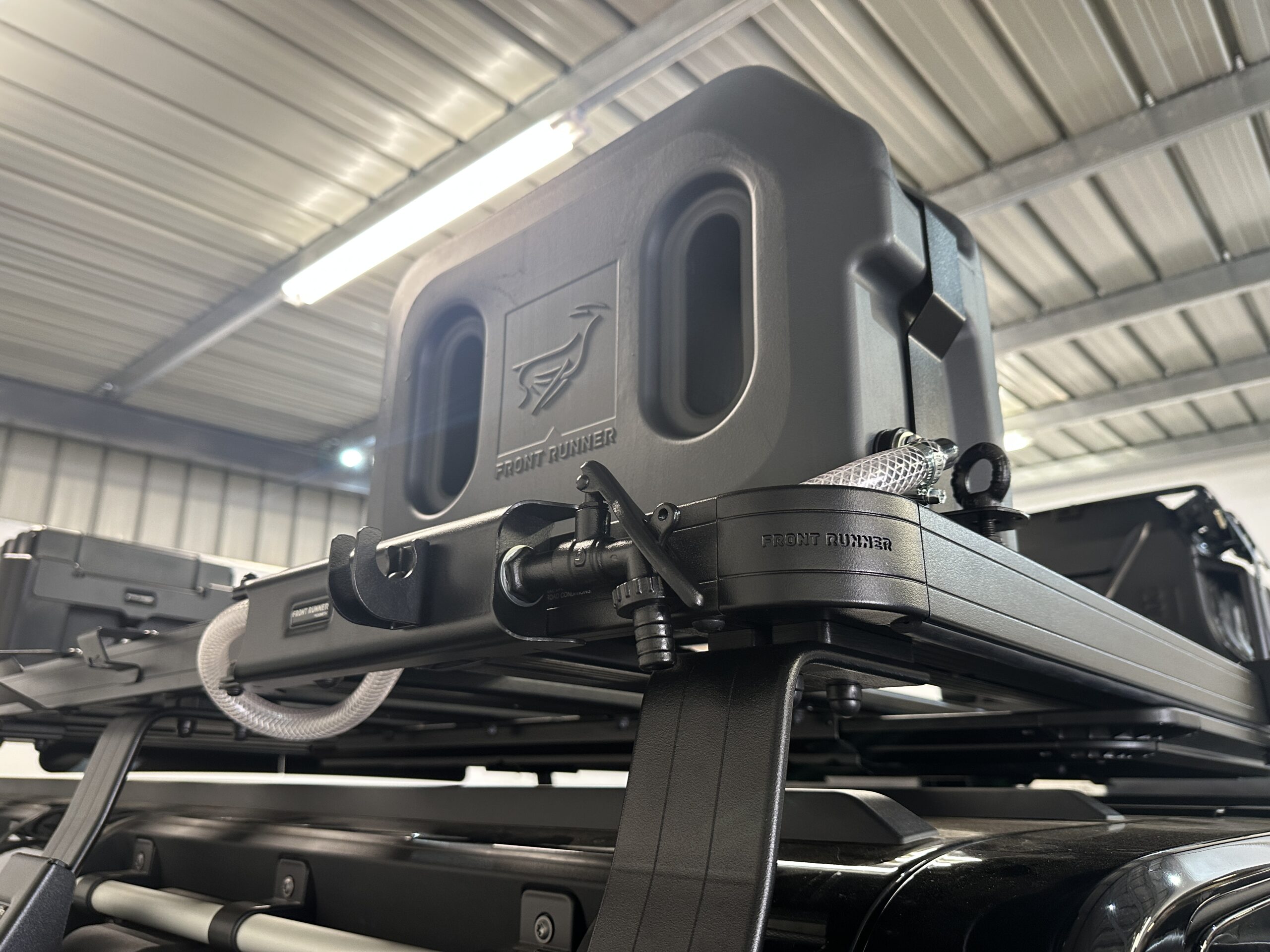
To manage this goal, I have elected to only put a reserve amount of fuel in one of the cans (about 3 gallons) and keep just enough water in the tank for a quick rinse and as an emergency reserve. For Malawi, I needed to push every to-the-max roof load limit to have enough fuel (Malawi had significant fuel shortages) to explore the backroads and along the length of Lake Malawi. I crossed the border with 90 liters in the main tank, 40 in jerry cans, and 36 in Giant Loop fuel bladders. I emptied the water tank and stored drinking water in the passenger front footwell, low and far forward. This configuration was the heaviest I had loaded the rack, at just under 280 pounds. The Grenadier handled fine, and I could have put the MaxTrax and table inside at the front of the sleeping platform to pull the weight off the top. It is also important to note that the weight is only at its maximum for a brief period, as I topped off the tank at the end of each day to move the weight off the rack. There are best-case scenarios, and there is reality. The reality was that fuel was scarce in Malawi, and I needed 1,200 kilometers of range—petrol went on the rack.

To address the sleeping requirements, I worked with the Front Runner engineering team to design a lightweight platform that works with the rear seats occupied or folded flat on top of the rear seats (when the backs are folded down) for sleeping. This included a hinge at the front of the platform that allows the load floor to be folded back and on top of the frame. The frame is tall enough to allow four of the Front Runner boxes to slide underneath, and when the platform is folded forward, it becomes a carpeted sleeping platform. At 6 foot 1 inch, I am more than comfortable with the length, and my friend Joe Fleming also joined for part of the trip to Tanzania, and he is 6 foot 7 inches. The front seats are slid forward on their tracks, and the seat backs are tilted upright. I then stuff a few bags in the gap, and shazam, a good night’s sleep.
I choose to sleep in the truck for many reasons, primarily due to ease and protection from the weather. No tents are as well-insulated, weatherproof, and quiet as the inside of a premium 4WD wagon. I also chose to forego a traditional drawer, as I can remove the boxes quickly, and the entire system weighs much less. For sleeping, I use a Melvill & Moon canvas bedroll, which has an incorporated foam mattress and is cotton-lined. The weather has been warm enough that the simple canvas and cotton cover is more than enough, but I also brought along a Rumpl blanket for cold nights and used an inflatable Nemo pillow (the same one I have used since 2010).
On top of the platform, I lashed a 25-liter Dometic CFX fridge and used the Grenadier’s multiple lashing points to secure the other bags, chairs, and dry goods. Overall, this system works well for my needs as a solo or +1 traveler in the Grenadier. It is intentionally light and simple, accommodating my critical fuel needs in remote parts of Africa. Gaining use of the clever Safari windows is also a plus, as there is so much more of the African continent to see.
$1,965 for the 3/4 rack | frontrunneroutfitters.com
Our No Compromise Clause: We do not accept advertorial content or allow advertising to influence our coverage, and our contributors are guaranteed editorial independence. Overland International may earn a small commission from affiliate links included in this article. We appreciate your support.



